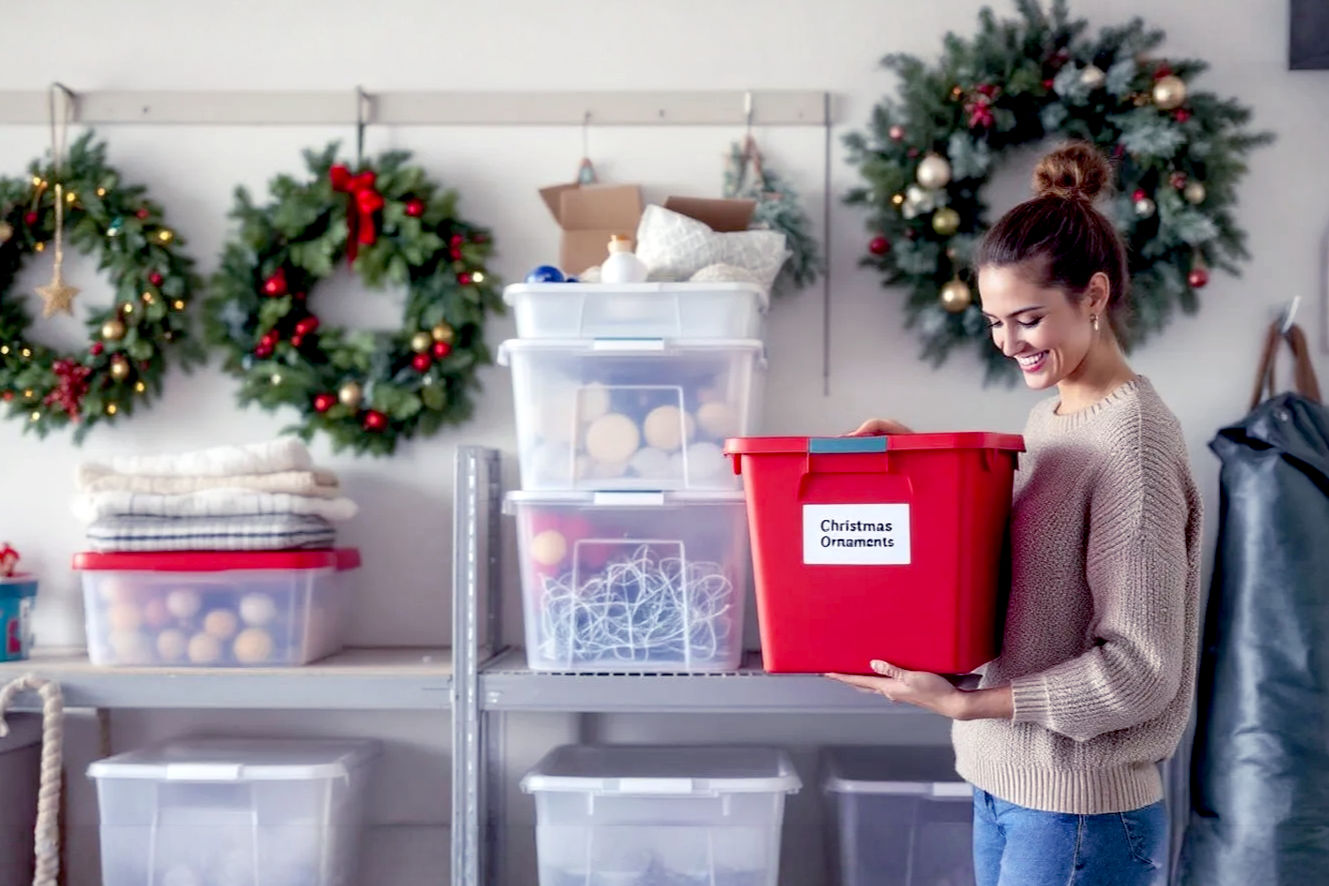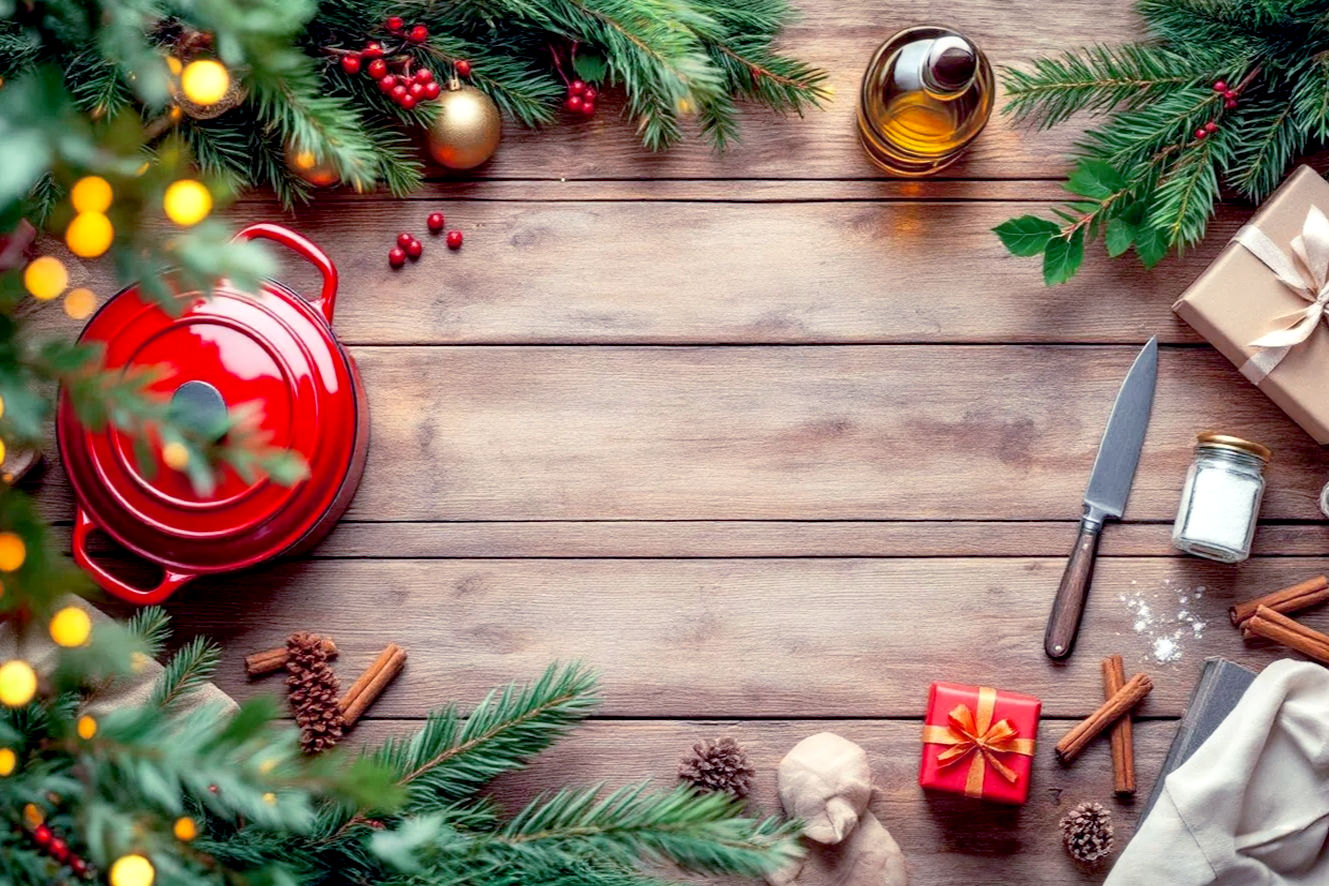This post may contain affiliate links. If you make a purchase through these links, we may earn a commission at no additional cost to you.
The holiday season brings with it a unique kind of magic, and for many, that magic truly begins with the arrival of a Christmas tree. Its fresh scent fills the air, its branches await festive decorations, and it stands as the glowing centerpiece of countless family traditions. But have you ever stopped to wonder where these iconic symbols of holiday cheer actually come from? While Christmas trees sprout up in living rooms across the nation, there’s one state that stands head and shoulders above the rest in their cultivation: Oregon, often affectionately known as “The Christmas Tree State.”
This article will pull back the curtain on Oregon’s remarkable role in the Christmas tree industry. We’ll explore why its unique environment makes it the perfect home for these evergreens, delve into the specific types of trees that thrive there, and uncover the intricate science and dedicated care involved in growing them. We’ll also examine the significant economic impact this industry has, discuss the sustainable practices that farmers employ, and trace the journey of a Christmas tree from a tiny seedling in a vast field to the beloved centerpiece of your holiday celebrations.
Oregon: The Undisputed Christmas Tree Capital
When you picture a Christmas tree farm, you might imagine rolling hills covered in perfectly shaped evergreens, often with a crisp, cool climate. This image perfectly aligns with much of Oregon, a state blessed with a combination of environmental factors that make it an ideal location for growing millions of Christmas trees each year. It’s not just a happy accident; it’s a result of geology, climate, and dedicated agricultural practices.
Oregon’s unique geography, particularly the Willamette Valley and the foothills of the Cascade Mountains, provides the perfect growing conditions. The region benefits from abundant rainfall, especially during the crucial growing seasons, which ensures consistent moisture for the trees. Furthermore, the volcanic soils found here are typically well-drained and slightly acidic, a composition that evergreens absolutely love. These soils are rich in essential nutrients, providing a robust foundation for healthy, vigorous tree growth. The moderate temperatures, with cool, wet winters and warm, dry summers, also contribute to the trees’ ideal development, allowing them to establish strong root systems and develop dense, vibrant foliage.
The history of Christmas tree farming in Oregon isn’t a new phenomenon; it dates back decades, evolving from small family plots to a sophisticated, large-scale agricultural industry. Early farmers recognized the potential of the land, and over generations, they refined cultivation techniques, leading to the highly efficient and productive farms we see today. This long-standing tradition has fostered a deep understanding of evergreen horticulture within the state, creating a community of experienced growers and a robust infrastructure to support the industry.
When we talk about numbers, Oregon’s dominance becomes even clearer. The state consistently leads the nation in Christmas tree production, shipping millions of trees annually to homes across the United States and even internationally. While exact figures fluctuate year to year due to market demand and growing cycles, Oregon typically accounts for a significant percentage of all real Christmas trees sold in the U.S. In recent years, Oregon has produced anywhere from 5 to 7 million Christmas trees annually, solidifying its position as the top producer. To put that into perspective, that’s enough trees to supply roughly half of all American households that choose a real tree.
While Oregon holds the top spot, it’s important to acknowledge other significant players. North Carolina, for example, is another major Christmas tree producing state, particularly renowned for its Fraser Fir trees. States like Michigan, Pennsylvania, and Wisconsin also contribute substantially to the national supply. However, Oregon’s sheer volume and diverse range of species firmly establish its reputation as the true Christmas Tree State. Its ability to consistently produce high-quality trees in such vast quantities is a testament to its favorable conditions and the expertise of its growers.
The Evergreen Stars: Popular Christmas Tree Species from Oregon
Oregon’s diverse climate and varied terrain allow it to cultivate a wide array of evergreen species, each with its own unique characteristics that appeal to different tastes. While some trees are known for their strong aroma, others are prized for their needle retention or sturdy branches. Here are some of the most popular Christmas tree species that thrive in Oregon’s fertile lands:
Douglas Fir: The Classic Choice
The Douglas Fir (Pseudotsuga menziesii) is arguably the most popular Christmas tree in the Pacific Northwest and a significant crop in Oregon. It’s known for its classic conical shape, medium-length soft green needles, and a pleasant, sweet fragrance. The needles are typically 1 to 1.5 inches long, soft to the touch, and radiate in all directions from the branch, giving the tree a full appearance.
Cultivation of the Douglas Fir is relatively straightforward compared to some other species, making it a favorite among growers. It grows quickly, often reaching marketable size in 6 to 8 years, which is faster than many other fir varieties. This rapid growth, combined with its adaptability to various soil types and its generally good disease resistance, makes it a highly economical choice for both farmers and consumers. Its sturdy branches are excellent for holding ornaments, and its widespread availability makes it a staple of the holiday season.
Noble Fir: The Premium Evergreen
Often considered the “Cadillac” of Christmas trees, the Noble Fir (Abies procera) is a premium choice known for its exceptional beauty, strong branches, and outstanding needle retention. Its stiff, upward-curving needles are distinctive, typically 1 to 1.5 inches long, and have a beautiful blue-green color. The branches are widely spaced, making them perfect for displaying larger, heavier ornaments without drooping.
Noble Firs thrive in the cooler, higher elevations of Oregon, often found growing at 1,000 to 5,000 feet above sea level. These specific growing conditions contribute to their slower growth rate, meaning they take longer to mature—typically 8 to 12 years to reach a marketable height. This extended growth period, combined with the specialized care they require, contributes to their higher price point. However, their superior quality, longevity, and elegant appearance make them a highly sought-after tree for those seeking a truly magnificent centerpiece. The Noble Fir’s strong, classic fir scent also adds to its appeal.
Grand Fir: Aromatic and Elegant
The Grand Fir (Abies grandis) is another beloved species grown in Oregon, celebrated for its strong, distinctive citrus-like aroma and its beautiful, glossy dark green needles. These needles are typically flat, about 1 to 1.5 inches long, and grow in two distinct rows along the branch, giving the tree a flattened, elegant appearance. The underside of the needles often has two silvery bands, adding to its visual appeal.
Grand Firs are known for their relatively fast growth, often reaching marketable size in 7 to 9 years. They adapt well to a variety of soil conditions, though they prefer moist, well-drained sites. Their lush foliage and pleasant fragrance make them a popular choice for families looking to fill their homes with the quintessential scent of Christmas. While perhaps not as sturdy as the Noble Fir for heavy ornaments, their dense foliage provides an excellent backdrop for lights and lighter decorations.
Fraser Fir: North Carolina’s Pride, Oregon’s Cultivation
While the Fraser Fir (Abies fraseri) is most famously associated with North Carolina, where it is the dominant species grown in the Appalachian Mountains, Oregon growers also cultivate it due to its immense popularity. The Fraser Fir shares many characteristics with the Noble Fir, including excellent needle retention, strong branches, and a classic pyramidal shape. Its needles are short, soft, and dark green with a silvery underside, giving the tree a beautiful two-toned appearance.
The Fraser Fir’s popularity stems from its combination of durability, pleasant aroma, and classic Christmas tree shape. It can retain its needles for weeks, making it an excellent choice for those who put their tree up early. Growing Fraser Firs in Oregon requires careful management to replicate the conditions they prefer in their native Appalachian habitat, often involving specific site selection and soil amendments to ensure optimal growth. Despite the challenges, its high demand makes it a valuable crop for Oregon farmers.
Other Notable Species
Beyond these primary varieties, Oregon also cultivates other evergreens that serve as Christmas trees, including:
- Nordmann Fir (Abies nordmanniana): Known for its deep green, glossy needles that are very soft to the touch and excellent needle retention. It’s becoming increasingly popular due to its symmetrical shape and durability.
- Concolor Fir (Abies concolor), also known as White Fir: Features long, soft, blue-green needles and a distinct citrus scent. It’s a hardy tree with good needle retention.
The ability to grow such a diverse range of high-quality Christmas tree species is a testament to Oregon’s unique environmental advantages and the expertise of its dedicated growers.
The Science of Cultivation: From Seedling to Centerpiece
Growing a perfect Christmas tree isn’t just about planting a seed and waiting; it’s a meticulous, multi-year process that combines agricultural science with dedicated horticultural care. From selecting the right plot of land to the final harvest, every step is crucial in producing the vibrant, symmetrical trees that families cherish.
Site Selection and Soil Preparation
The journey begins long before a seed is even planted, with the careful selection and preparation of the farm site. Site selection is paramount. Christmas trees, especially firs, thrive in well-drained soils. If water pools around their roots, it can lead to root rot, a fungal disease that can quickly kill young trees. Farmers look for gently sloping land that allows excess water to drain away naturally.
Once a site is chosen, soil preparation becomes the next critical step. This involves comprehensive soil testing to determine the soil’s composition, nutrient levels, and pH. The pH level (a measure of acidity or alkalinity) is particularly important; most firs prefer a slightly acidic to neutral pH, typically between 5.5 and 6.5. If the soil is too acidic or too alkaline, farmers will apply amendments like lime (to raise pH) or sulfur (to lower pH) to bring it into the optimal range. They also analyze nutrient deficiencies and add fertilizers or organic matter to ensure the soil has all the necessary building blocks for healthy tree growth, such as nitrogen, phosphorus, and potassium. This foundational work ensures that the young seedlings have the best possible start.
Propagation and Planting
Christmas trees are typically grown from seeds, though some specialized varieties might use cuttings. Seed collection is a precise process, often involving harvesting cones from mature, high-quality “mother trees” known for desirable traits like good shape and needle retention. These seeds then undergo stratification, a process that mimics natural winter conditions by exposing them to cold, moist environments to break their dormancy and encourage germination.
Most Christmas tree farms don’t plant seeds directly into the field. Instead, they rely on specialized nurseries that grow seedlings under controlled conditions. These young trees, often called seedlings (typically 1-2 years old) or transplants (seedlings that have been moved to another nursery bed for an additional 1-2 years to develop a stronger root system), are then carefully dug up and transported to the Christmas tree farms.
Planting techniques are vital for ensuring the trees establish well. Seedlings are typically planted by hand or with specialized planting machines, ensuring proper spacing between each tree. This spacing is crucial for several reasons: it allows each tree enough room to grow without competing excessively for sunlight, water, and nutrients, and it provides ample space for future maintenance activities like shearing and harvesting. Typical spacing might be 5 to 6 feet between trees, allowing for optimal growth and air circulation.
Growth Management and Care
Once planted, the trees require continuous care over many years to reach their marketable size and shape. This long-term commitment involves several key practices:
Weed Control
Weeds are a major competitor for young trees, stealing water, nutrients, and sunlight. Farmers employ various weed control methods. Mechanical weed control involves tilling or mowing between rows, while chemical weed control uses herbicides applied carefully to minimize impact on the trees. Many farms also use mulching around the base of the trees to suppress weeds and retain soil moisture.
Pest and Disease Management
Christmas trees are susceptible to a range of pests and diseases. Common insect pests include aphids, which can deform needles; spider mites, which cause discoloration; and various borers that tunnel into the trunk. Fungal diseases like root rot (often caused by poor drainage) and needle cast (which causes needles to turn brown and fall off) are also concerns.
Modern Christmas tree farming often employs Integrated Pest Management (IPM) strategies. IPM is a holistic approach that focuses on prevention and uses a combination of methods to control pests and diseases while minimizing environmental impact. This might include:
- Monitoring: Regularly inspecting trees for early signs of infestation or disease.
- Cultural Practices: Ensuring proper tree health through good nutrition and drainage to make them more resilient.
- Biological Controls: Introducing beneficial insects that prey on pests.
- Chemical Controls: Using targeted, low-impact pesticides only when necessary and at appropriate times, following strict guidelines.
Nutrient Management
Just like any crop, Christmas trees need a balanced supply of nutrients to grow strong and healthy. Nutrient management involves regular soil analysis to determine what nutrients are present and what might be lacking. Based on these tests, farmers develop fertilization schedules, applying specific fertilizers (containing nitrogen, phosphorus, potassium, and micronutrients) at different stages of the tree’s growth. This ensures the trees have the energy they need for vigorous growth and vibrant green foliage.
Shearing and Shaping
Perhaps the most iconic aspect of Christmas tree cultivation is shearing and shaping. This isn’t just about aesthetics; it’s a critical horticultural practice that encourages dense foliage and the classic conical shape consumers expect. Without shearing, many firs would grow tall and spindly with sparse branches.
Shearing typically begins when trees are about 3-4 years old and continues annually until harvest. It involves carefully pruning the leader (the main vertical shoot) and the lateral branches. The goal is to create a strong central leader and encourage the development of numerous side branches, resulting in a full, symmetrical tree. Farmers use specialized hand tools, like long knives or shears, to cut the new growth (the “candles”) back to a desired length. Some larger farms may use mechanical trimmers for efficiency, but much of the precision shaping is still done by hand, a true art form passed down through generations of growers. This process ensures the tree grows into that perfect, dense cone shape, ready for holiday decorations.
Harvesting and Post-Harvest Care
The culmination of years of effort is the harvest. This typically occurs in the fall, from late October through November, to ensure trees are fresh for the holiday season.
Timing of harvest is crucial. Trees are cut when they are fully dormant, meaning their sap flow has slowed, which helps them retain their needles longer after cutting. Cutting techniques usually involve a sharp chainsaw to make a clean cut close to the ground, leaving a stump that will often sprout new growth for future harvests in a practice known as “stump culture” or “coppicing,” though this is more common for certain species or in specific regions.
After cutting, trees are quickly moved from the field. They are often baled or netted, a process where a machine compresses the branches and wraps the tree in netting. This makes them easier to handle, transport, and prevents branch breakage. From the field, they are loaded onto trucks for distribution to wholesale buyers or retail lots.
Hydration and freshness retention are paramount post-harvest. Many farms will “shake” trees to remove loose needles and debris. Some may also use specialized equipment to provide a fresh cut to the base of the trunk and then place trees in water to allow them to absorb moisture before shipping. This helps ensure the trees arrive at their destination as fresh as possible, ready to adorn homes for weeks. The entire cultivation process, from tiny seed to towering tree, is a testament to the dedication and scientific understanding of Christmas tree farmers.
The Economic Evergreen: Impact of Christmas Tree Farming
The Christmas tree industry is far more than just a charming seasonal tradition; it’s a significant agricultural sector with a substantial economic footprint. In states like Oregon, where production is concentrated, the impact reverberates through local communities and contributes significantly to the state’s overall economy.
One of the most direct economic benefits is job creation. Christmas tree farming is labor-intensive, particularly during peak seasons. While a core team might work year-round managing the farms, the industry relies heavily on seasonal labor for planting, shearing, and especially harvesting. This provides crucial employment opportunities for thousands of individuals, from skilled farmhands to temporary workers, injecting wages directly into rural economies. These jobs are not just on the farms themselves; they extend to nurseries that supply seedlings, transportation companies that haul trees, and retail operations that sell them.
The revenue generation from Christmas tree sales is immense. As the nation’s top producer, Oregon’s Christmas tree farms generate hundreds of millions of dollars in sales annually. This revenue flows back into the state’s economy through various channels:
- Farm Income: Direct sales provide income for farmers, allowing them to reinvest in their operations, purchase equipment, and support their families.
- Taxes: Property taxes, sales taxes (where applicable), and income taxes from the industry contribute to state and local government budgets, funding public services.
- Supply Chain: The money spent on supplies like fertilizers, pesticides, netting, baling equipment, and machinery further stimulates manufacturing and retail sectors.
Beyond the farms themselves, the industry supports numerous ancillary industries. Transportation is a huge component, with countless trucks crisscrossing the country to deliver trees from Oregon to every corner of the nation. This creates demand for trucking companies, fuel, and vehicle maintenance. The retail sector also benefits immensely, from large chain stores to small, independent tree lots and “choose-and-cut” farms, all of which generate sales and employ staff. Equipment manufacturers, agricultural consultants, and even tourism (for choose-and-cut operations) are all part of this extended economic web.
The impact on rural communities is particularly profound. In many agricultural areas of Oregon, Christmas tree farming is a cornerstone industry, providing stable employment and income where other opportunities might be scarce. It helps maintain rural landscapes, supports local businesses (like restaurants, hardware stores, and gas stations that cater to farm workers and owners), and preserves a way of life. The industry often fosters a strong sense of community, with multi-generational farms playing a central role in the social fabric.
However, the industry also faces its share of challenges. Labor shortages can be a persistent issue, especially for seasonal work, leading to increased labor costs. Climate change poses a long-term threat, with changing weather patterns, increased drought, or more extreme temperatures potentially impacting tree growth and increasing the risk of pests and diseases. Market fluctuations based on consumer demand, economic conditions, and competition from artificial trees can also create instability. Despite these hurdles, the Christmas tree industry remains a resilient and vital part of Oregon’s agricultural landscape, demonstrating the significant economic power of these holiday evergreens.
Sustainable Practices in Christmas Tree Farming
In an era of increasing environmental awareness, the sustainability of agricultural practices is a key concern. Christmas tree farming, particularly in leading states like Oregon, has evolved to incorporate numerous sustainable practices, demonstrating a commitment to environmental stewardship and responsible land management. Far from being a drain on resources, well-managed Christmas tree farms can offer significant ecological benefits.
One of the most important environmental benefits of Christmas tree farms is carbon sequestration. As trees grow, they absorb carbon dioxide (CO2) from the atmosphere through photosynthesis, converting it into biomass (wood, needles, roots). This process effectively removes CO2, a major greenhouse gas, from the air, helping to mitigate climate change. A typical acre of Christmas trees can absorb significant amounts of CO2 over its growth cycle, making these farms active contributors to cleaner air. Furthermore, the dense canopy of a Christmas tree farm provides habitat provision for various wildlife, including birds, small mammals, and insects, offering shelter and food sources that might otherwise be lost in developed areas. The extensive root systems of the trees also contribute to soil stabilization, preventing erosion, particularly on sloped terrain, and improving water infiltration.
Water management is another critical aspect of sustainable farming. While Oregon receives ample rainfall, efficient water use is still important. Farmers often employ modern irrigation techniques like drip irrigation, which delivers water directly to the tree’s root zone, minimizing evaporation and runoff compared to traditional overhead sprinklers. This precision watering ensures that water is used effectively, conserving this precious resource. Many farms also focus on improving soil health, which enhances the soil’s natural ability to retain moisture, reducing the need for supplemental irrigation.
The use of pesticides is a topic that often raises concerns, but sustainable Christmas tree farming emphasizes responsible application and the exploration of alternatives. As mentioned earlier, Integrated Pest Management (IPM) is a cornerstone of this approach. IPM prioritizes non-chemical methods first, such as biological controls (introducing natural predators of pests) and cultural practices (maintaining healthy trees that are more resistant to pests). When pesticides are necessary, farmers use targeted applications, choosing products with lower environmental impact and applying them precisely to affected areas, rather than broad spraying. This minimizes chemical runoff and protects beneficial insects and surrounding ecosystems.
To provide consumers with assurance about sustainable practices, various certification programs have emerged. These programs establish standards for environmental stewardship, worker safety, and community engagement. Examples include:
- “Choose and Cut” farms: These often allow consumers to visit the farm, see the trees growing, and sometimes learn directly about the farm’s practices, fostering a connection to sustainable agriculture.
- Local certifications: Some state or regional agricultural bodies offer certifications based on specific local environmental guidelines.
- National standards: Organizations like the Coalition of Environmentally Responsible Economies (CERES) or specific forestry certification bodies may offer broader certifications that ensure adherence to rigorous environmental and social standards.
A fundamental aspect of sustainability in Christmas tree farming is replanting and crop rotation. After trees are harvested, the land isn’t left barren. Farmers immediately replant new seedlings in the same fields, ensuring a continuous cycle of growth and carbon sequestration. This continuous replanting means that Christmas tree farms are effectively renewable resources. Unlike logging operations that might clear-cut forests, Christmas tree farms are managed agricultural lands where trees are grown specifically for harvest and then replaced. Some farms also practice a form of crop rotation, occasionally planting cover crops or letting fields lie fallow for a period to replenish soil nutrients naturally.
Finally, it’s worth debunking myths surrounding the environmental impact of real versus artificial trees. While an artificial tree can be reused for many years, its production involves petroleum-based plastics and often manufacturing in distant countries, leading to a significant carbon footprint. When an artificial tree is eventually discarded, it typically ends up in a landfill, where its non-biodegradable components persist for centuries. Real Christmas trees, on the other hand, are biodegradable. When properly disposed of (e.g., through chipping for mulch, composting, or sinking in ponds for fish habitat), they return nutrients to the earth. The carbon they absorbed during their growth is released back into the atmosphere, but this is part of the natural carbon cycle, unlike the release of new carbon from fossil fuels used in artificial tree production. Thus, choosing a real, sustainably grown Christmas tree often represents a more environmentally friendly option, especially when sourced locally.
The Journey of a Christmas Tree: From Farm to Living Room
The path a Christmas tree takes from the vast fields of Oregon to your cozy living room is a well-orchestrated logistical feat, involving multiple stages of distribution and retail. Understanding this journey can give you a greater appreciation for the fresh evergreen that becomes the focal point of your holiday celebrations.
Wholesale Distribution
Once harvested, baled, and prepared for shipment, the vast majority of Oregon’s Christmas trees enter the wholesale distribution network. This is where large buyers, such as national retail chains, regional distributors, and independent tree lot operators, purchase trees in bulk directly from the farms. Farms often have established relationships with these wholesalers, sometimes years in advance, to ensure a consistent market for their crop.
The trees are loaded onto large semi-trailer trucks, often stacked tightly to maximize space, and then begin their journey across the country. This transportation phase is critical, requiring careful planning to ensure trees arrive at their destinations quickly and in optimal condition. Refrigerated trucks are sometimes used for longer hauls or during warmer weather to maintain freshness. The efficiency of this wholesale network is what allows Oregon-grown trees to reach nearly every state in the U.S. within days of being cut.
Retail Sales: Diverse Avenues
Upon arrival at their destination, Christmas trees are then distributed through various retail sales channels, each offering a different buying experience for consumers:
Big Box Stores
Large retail chains, often referred to as big box stores (like Home Depot, Lowe’s, or Walmart), are major outlets for Christmas trees. They purchase enormous quantities of trees through wholesale channels and offer them to consumers at competitive prices. These stores provide convenience and accessibility, with trees often displayed in large outdoor garden centers. While the selection might be broad, the personal touch of a smaller lot might be absent.
Independent Lots
Across towns and cities, independent tree lots pop up seasonally, often run by local businesses, families, or non-profit organizations. These lots typically source their trees from wholesalers, but they often pride themselves on offering a curated selection, more personalized customer service, and a distinct festive atmosphere. Staff at independent lots are often more knowledgeable about the different tree species and can provide advice on selection and care. They contribute to the local economy and often become a cherished part of a community’s holiday tradition.
Choose-and-Cut Farms
For many, the most immersive and traditional way to get a Christmas tree is by visiting a “choose-and-cut” farm. While Oregon is a major producer of wholesale trees, it also has numerous farms that open their gates to the public, allowing families to walk through the fields, select their perfect tree, and cut it down themselves. This experience offers a unique connection to the source of the tree and creates lasting family memories. Choose-and-cut farms often provide saws, baling services, and sometimes even hot chocolate and hayrides, turning the tree-buying process into a cherished holiday outing. This model supports local agriculture directly and offers the freshest possible tree.
Consumer Tips for Selecting a Fresh Tree
Regardless of where you purchase your tree, knowing how to select a fresh one is key to its longevity and beauty throughout the holiday season. Here are some essential tips:
- Needle Retention Test: Gently grasp a branch and pull your hand towards you. Very few needles should come off. For firs, try bending a needle between your fingers; it should snap crisply, not feel rubbery.
- Color and Fragrance: The needles should be vibrant green (or blue-green, depending on the species) and have a strong, fresh evergreen scent. Avoid trees with dull, faded, or yellowing needles.
- Branch Flexibility: The branches should be pliable and not brittle. If they snap easily, the tree is likely dry.
- Shake Test: Lift the tree a few inches off the ground and drop it gently on its stump. If a large number of green needles fall off, the tree is likely dry. A few inner brown needles are normal, but excessive green needle drop indicates poor freshness.
- Trunk Check: Look at the cut end of the trunk. It should be clean and light-colored, not dark or moldy. A dark trunk can indicate an old cut or decay.
Post-Purchase Care: Ensuring Longevity
Once you’ve brought your fresh tree home, proper post-purchase care is essential to keep it hydrated and looking its best throughout the holidays:
- Fresh Cut: Before placing the tree in its stand, make a fresh, straight cut across the base of the trunk, about an inch from the original cut. This re-opens the tree’s water-absorbing cells, which can seal over with sap after just a few hours.
- Immediate Water: Place the tree in a sturdy stand that holds plenty of water immediately after making the fresh cut. A typical tree can drink a gallon of water or more in the first 24 hours.
- Consistent Watering: Check the water level daily and refill as needed. Never let the water level drop below the base of the trunk. A dry tree will stop absorbing water and quickly dry out.
- Placement: Position the tree away from heat sources like fireplaces, radiators, and direct sunlight, which can accelerate drying. A cooler location will help the tree last longer.
- Disposal: After the holidays, don’t just toss your tree. Many communities offer tree recycling programs where trees are chipped into mulch for landscaping or used for other beneficial purposes, completing the sustainable cycle.
The journey of a Christmas tree is a remarkable one, from the meticulous care on an Oregon farm to its cherished place in your home, bringing joy and tradition to the holiday season.
Conclusion
The humble Christmas tree, a symbol of joy and tradition, has a fascinating story, and much of that story begins in the verdant landscapes of Oregon, truly “The Christmas Tree State.” We’ve seen how Oregon’s unique climate and fertile soils provide the perfect conditions for cultivating millions of these holiday evergreens each year, making it the undisputed leader in U.S. production. From the classic Douglas Fir to the stately Noble Fir and the aromatic Grand Fir, a diverse array of species thrives under the watchful eye of dedicated growers.
The cultivation of these trees is a blend of time-honored tradition and modern agricultural science. It’s a multi-year commitment involving precise site selection, meticulous soil preparation, careful planting, and continuous care through sophisticated growth management techniques. Farmers employ everything from integrated pest management to expert shearing, all to ensure that each tree reaches its full, symmetrical potential. This intricate process highlights the dedication and expertise required to bring these living centerpieces to our homes.
Beyond the farm, the Christmas tree industry is a powerful economic engine, providing vital jobs, generating significant revenue, and supporting numerous ancillary businesses. It’s an industry that underpins many rural communities, demonstrating the far-reaching impact of these seasonal crops. Crucially, the industry is increasingly focused on sustainability, with farmers implementing practices that benefit the environment, from carbon sequestration and habitat provision to responsible water and pesticide management. This commitment ensures that the tradition of a real Christmas tree can continue for generations to come, offering an environmentally conscious choice for holiday decorators.
Ultimately, the journey of a Christmas tree, from a tiny seedling on an Oregon hillside to the decorated focal point of your living room, is a testament to nature’s bounty, human ingenuity, and a deep-seated appreciation for holiday traditions. As you gather around your tree this season, remember the remarkable path it traveled and the dedication involved in bringing that touch of natural magic into your home. The Christmas tree isn’t just a decoration; it’s a living symbol of renewal, community, and the enduring spirit of the holidays.






